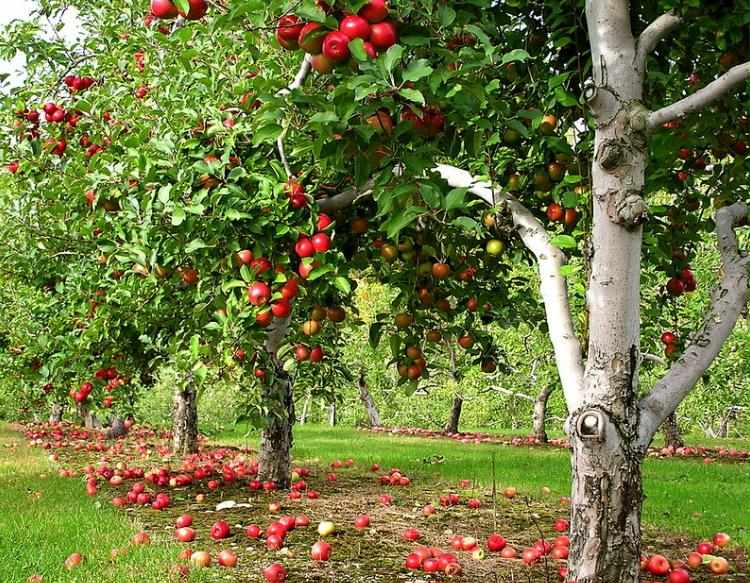
Preface. Although this article is only about one crop in one area, it portends a darker future for food production in the future, with each region having their own issues (i.e. drought in California). It’s only a matter of time before climate change reduces the food supply.
Alice Friedemann www.energyskeptic.com author of “When Trucks Stop Running: Energy and the Future of Transportation”, 2015, Springer and “Crunch! Whole Grain Artisan Chips and Crackers”. Podcasts: Practical Prepping, KunstlerCast 253, KunstlerCast278, Peak Prosperity , XX2 report
***
Newburger, E. 2019. ‘We’re fighting for our lives’ – US apple farmers endure major crop and profit losses as climate changes. CNBC.com.
Climate change has become an impossible financial burden for many farmers.
Warm spells in the winter force trees to flower prematurely and expose the buds to unpredictable winter frosts, hail and other extreme weather. In some cases, entire trees can become stressed and die.
Hurricanes snap and topple apple trees.
The Hudson Valley has a long and robust history of apple growing. New York is the second-largest apple producer in the U.S, and about 22% of the state’s annual apple production is derived from the Valley. But the apple-lush region is under serious pressure. In the past 50 years, the Valley has experienced a 71% increase in heavy rains, with unpredictable downpours and flooding.
Ryan, who operates several orchards in the Hudson Valley, has experienced three major crop losses due to bad weather in the last decade.
In 2012, apples in New York bloomed about a month earlier than usual when temperatures rose up to 70 degrees in February and then dropped back down. Half of the state’s apple crop was destroyed and farmers endured millions of dollars in losses.
It’s a significant economic problem, as apple production in the Northeast U.S. is valued at more than $400 million.
Between 2012 and 2017, more than 2,000 farms closed in the state, representing a 6% drop in the number of farms statewide, according to the New York Farm Bureau.
Lack of winter chilling and early bloom in the spring might seem like obvious problems, but climate change also poses a slew of other hardships for apple growers. For instance, warmer nights lead to the spread of pests and other diseases, and hot days in the winter sunburn the apple’s plant tissue.
Warming temperatures also cause significant defects and pigment damage to developed fruit, making it impossible for growers to sell them on the market. If the nights don’t cool down enough, an apple that is supposed to turn red will turn brown or pink instead.
The ramifications of climate change on the entire food system will be immense. But the problem is not yet obvious for most U.S. consumers, in part because a destroyed harvest in one region of the country could be masked by a better harvest in another
